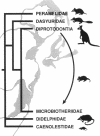Abstract
DNA hybridization was used to compare representatives of the major groups of marsupials and a eutherian outgroup. Because of the large genetic distances separating marsupial families, trees were calculated from normalized percentages of hybridization; thermal-melting statistics, however, gave identical topologies for the well-supported clades. The most notable results were the association of the only extant microbiotheriid, Dromiciops australis, an American marsupial, with the Australasian Diprotodontia, and of both together with the Dasyuridae. Estimates of the rate of divergence among marsupial genomes suggest that the Dromiciops-Diprotodontia split occurred approximately 50 million years ago, well after the establishment of the major clades of marsupials but before deep oceanic barriers prohibited dispersal among Australia, Antarctica, and South America. Because Dromiciops is nested within an Australasian group, it seems likely that dispersal from Australia accounts for its present distribution.
Full text
PDF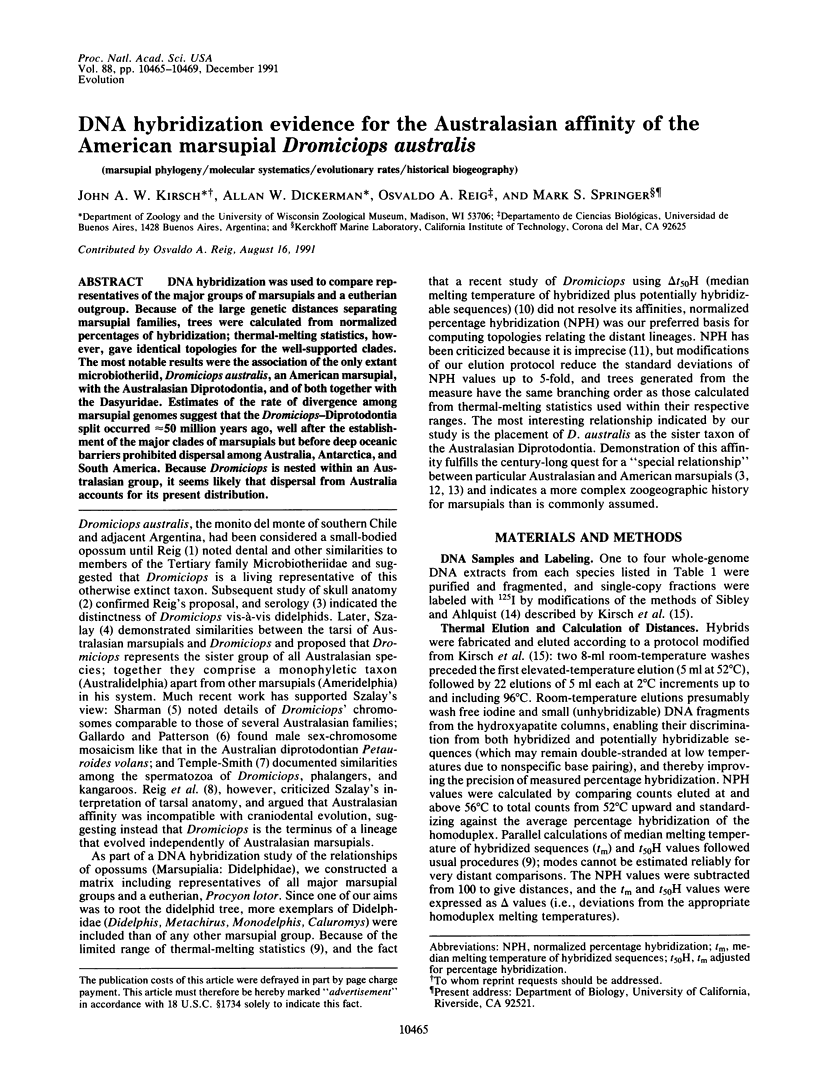
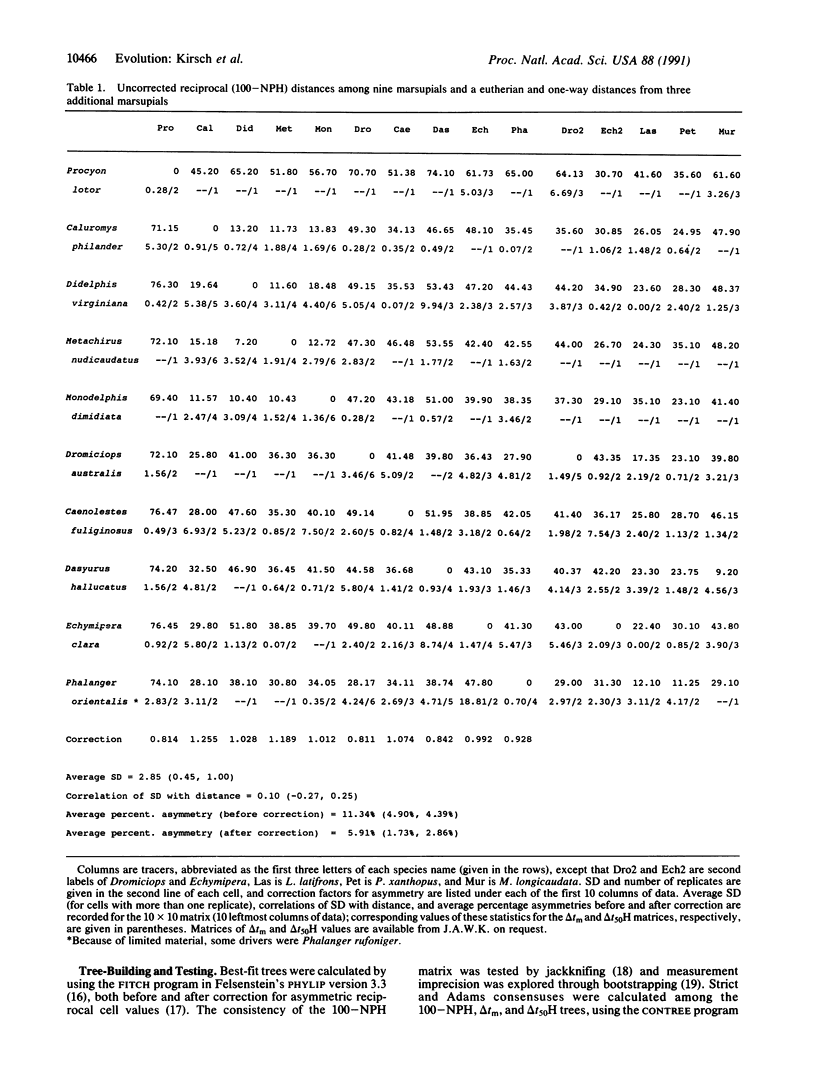
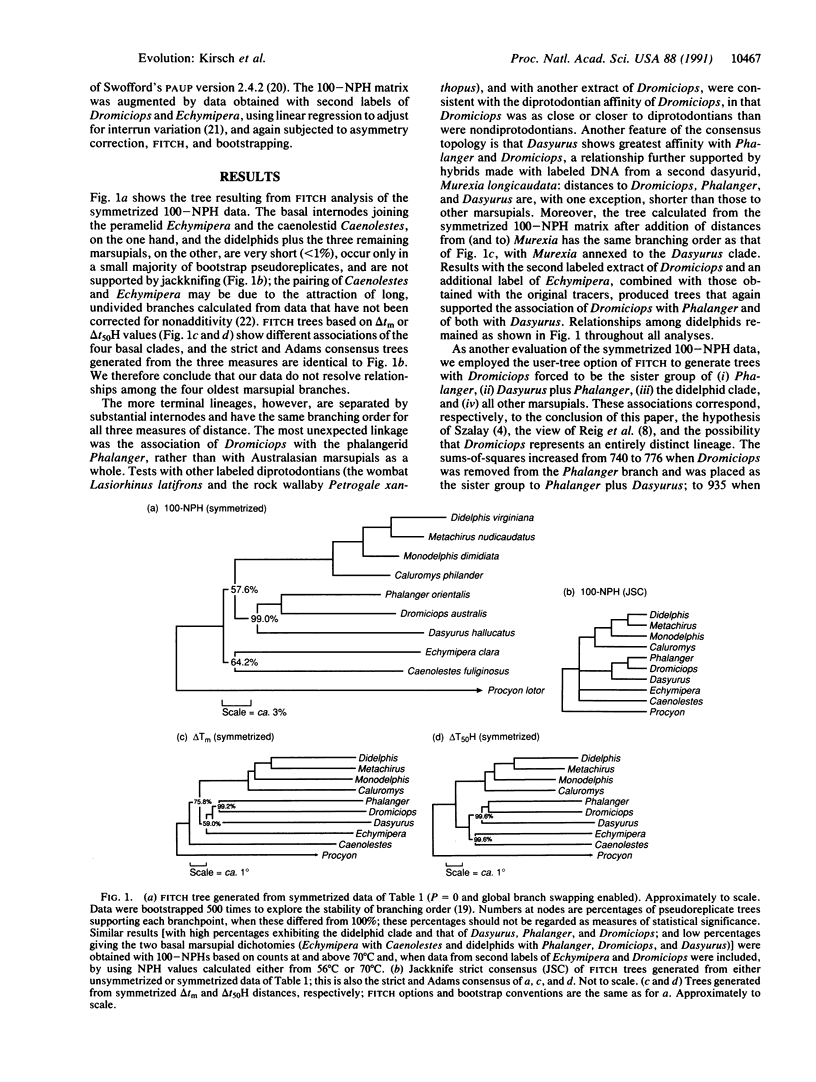
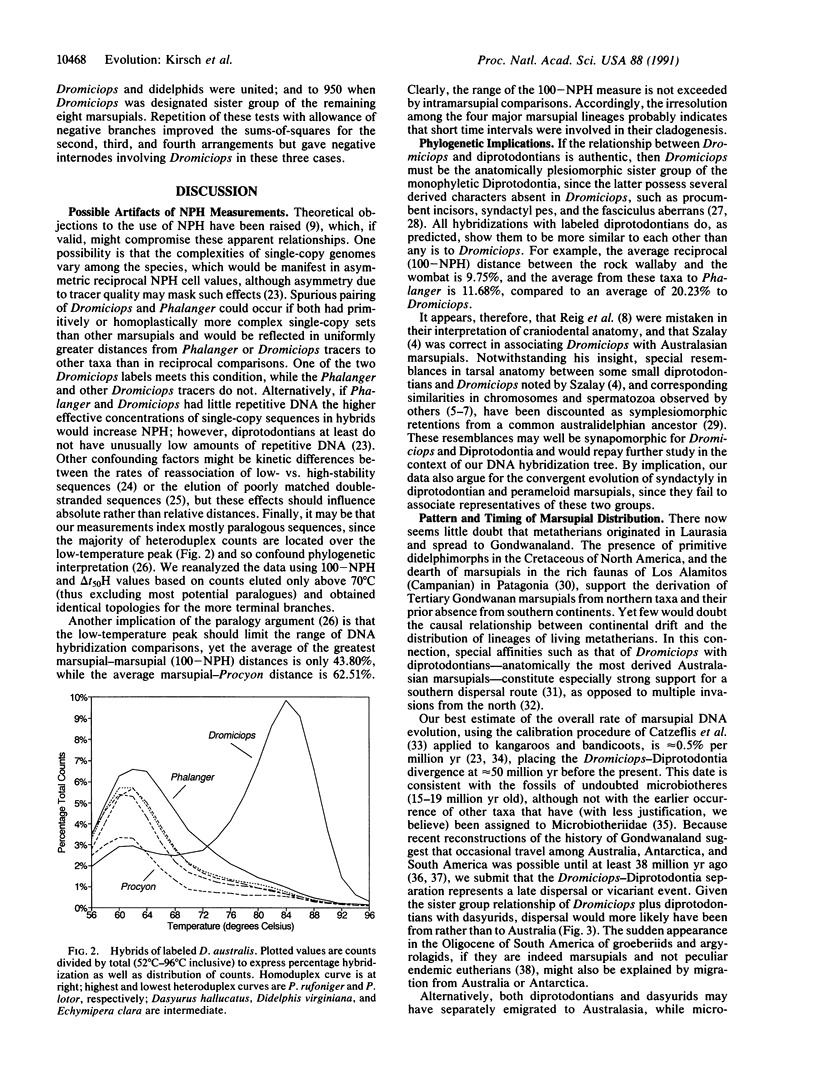
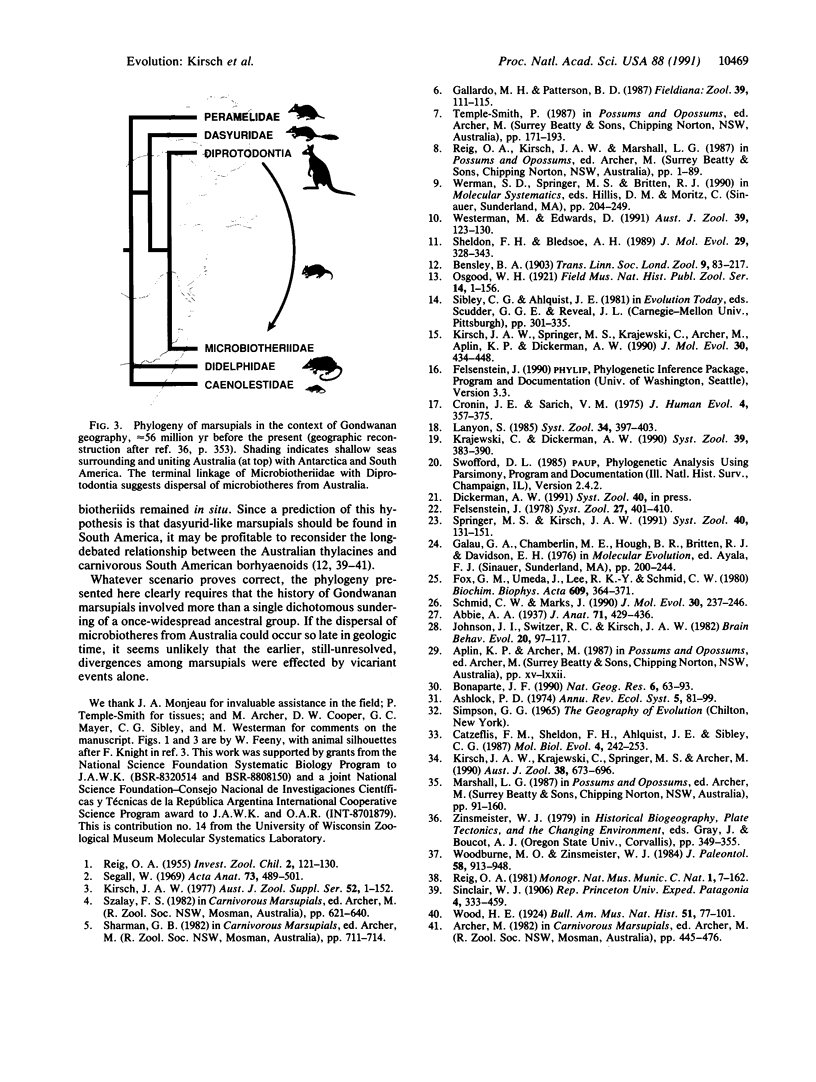
Images in this article
Selected References
These references are in PubMed. This may not be the complete list of references from this article.
- Abbie A. A. Some Observations on the Major Subdivisions of the Marsupialia: With Especial Reference to the Position of the Peramelidae and Caenolestidae. J Anat. 1937 Jul;71(Pt 4):429–436. [PMC free article] [PubMed] [Google Scholar]
- Catzeflis F. M., Sheldon F. H., Ahlquist J. E., Sibley C. G. DNA-DNA hybridization evidence of the rapid rate of muroid rodent DNA evolution. Mol Biol Evol. 1987 May;4(3):242–253. doi: 10.1093/oxfordjournals.molbev.a040444. [DOI] [PubMed] [Google Scholar]
- Fox G. M., Umeda J., Lee R. K., Schmid C. W. A phase diagram of the binding of mismatched duplex DNAs to hydroxyapatite. Biochim Biophys Acta. 1980 Oct 17;609(3):364–371. doi: 10.1016/0005-2787(80)90110-0. [DOI] [PubMed] [Google Scholar]
- Johnson J. I., Switzer R. C., 3rd, Kirsch J. A. Phylogeny through brain traits: the distribution of categorizing characters in contemporary mammals. Brain Behav Evol. 1982;20(1-2):97–117. doi: 10.1159/000121584. [DOI] [PubMed] [Google Scholar]
- Kirsch J. A., Springer M. S., Krajewski C., Archer M., Aplin K., Dickerman A. W. DNA/DNA hybridization studies of the carnivorous marsupials. I: The intergeneric relationships of bandicoots (Marsupialia: Perameloidea). J Mol Evol. 1990 May;30(5):434–448. doi: 10.1007/BF02101115. [DOI] [PubMed] [Google Scholar]
- Schmid C. W., Marks J. DNA hybridization as a guide to phylogeny: chemical and physical limits. J Mol Evol. 1990 Mar;30(3):237–246. doi: 10.1007/BF02099993. [DOI] [PubMed] [Google Scholar]
- Segall W. The middle ear region of Dromiciops. Acta Anat (Basel) 1969;72(4):489–501. doi: 10.1159/000143265. [DOI] [PubMed] [Google Scholar]
- Sheldon F. H., Bledsoe A. H. Indexes to the reassociation and stability of solution DNA hybrids. J Mol Evol. 1989 Oct;29(4):328–343. doi: 10.1007/BF02103620. [DOI] [PubMed] [Google Scholar]



